

MICRO-ePUMP
MICRO-ePUMP Micro Injector with Cell Penetrator
- Overview
- Specifications
- Accessories
- Citations
- Related Products
Overview
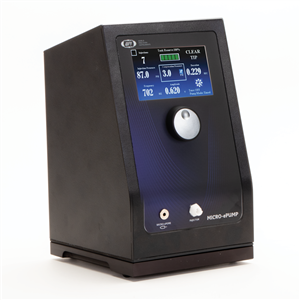
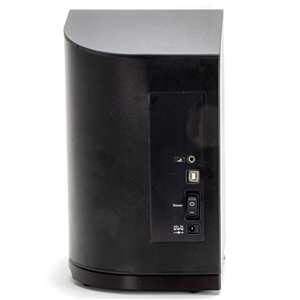
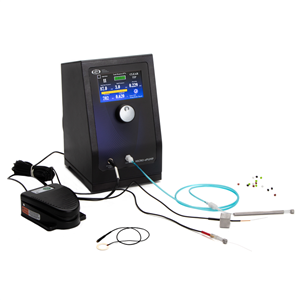
There are 3 images available to view - click to enlarge and scroll through the product gallery.
Micro-ePump Instruction Manual
/ Download as PDF
MICRO-ePUMP Quick Start Guide
/ Download as PDF
MICRO-ePUMP Microinjector with Cell Penetrator
- Regulated compensation and injection pressure
- Pressure output: 0.3–87 PSI
- Internal pressure source
- Onboard MICRO-ePORE™
- Pinpoint Cell Penetrator for targeted microinjection and increased viability of injected embryos
- Audio continuity tone indicating active probe
- Injection counter to indicate total number of injections
- User-adjustable frequency and voltage through touch screen
- Foot switch to activate voltage for MICRO-ePORE™ and injection
- Low volume tubing assembly
Benefits
- Increased viability of injected embryos
- Intuitive user-interface for injector and MICRO-ePORE™
- Small footprint takes up very little bench space
- Easy to navigate with touch screen and control knob
- Inject into a single cell in picoliter volumes
Applications
- Microinjection of diverse compounds and biomolecules – DNA, RNA, proteins
- Pre- and post-implantation in embryos of various species – mice, rats, monkeys, bovine, pigs, zebrafish, etc.
Designed to simplify intracellular injection and a variety of other microinjection tasks, the MICRO-ePUMP uses carefully regulated air pressure for injecting cells with fluid. Injected volumes range from picoliters to nanoliters. The port supplies positive pressure for high-pressure ejection. The pressure port maintains a low positive “compensation” pressure to the injecting pipette between injection pulses to prevent fluid uptake through capillary action.
Timing, injection pressure and compensation pressure are adjusted independently using the touch screen interface. Time intervals can range from 2 seconds down to 10 ms or less, depending on the injection pressure setting. The injection pressure interval is triggered using the foot switch.
The MICRO-ePUMP is designed to inject very small quantities of fluids, such as drugs, into cells or small organelles. Pressure injection is an especially useful alternative to electroionophoresis, since it does not mandate the use of charged ions. The compensation pressure is a constant low pressure that eliminates any capillary action front-filling of the pipette and then the precise burst of regulated higher pressure is activated with the foot switch that is included.
WPI’s MICRO-ePORE™ Pinpoint Cell Penetrator technology is embedded inside the MICRO-ePUMP. When the researcher enables the MICRO-ePORE™, it delivers a highly localized voltage signal to a targeted injection site to facilitate penetration with minimal trauma. The researcher determines the amplitude and frequency of the signal that best suits the application. The signal originates in the control box, and it is transmitted through the electrode interface cable to the microelectrode holder. A silver wire is used to transmit the signal into the electrically conductive substance being injected. A reference electrode is used to place the media at 0.0 V potential with reference to the generated voltage.
The MICRO-ePUMP offers separate regulated compensation (back filling prevention) and injection pressures with a precision timing circuit that switches from injection pressure to compensation pressure automatically.
System components
What is included |
Qty |
| MICRO-ePUMP | 1 |
| 300863 WPI MICRO-ePORE™ Electrode Holders(Electrode holder includes an electrode holderstartup kit.) | 2 |
| Microelectrode Holder Interface Cable | 1 |
| Well-style Reference Electrode | 1 |
| Probe-style Reference Electrode Assembly | 1 |
|
430-ALL PicoNozzle Kit which includes: (2) PicoNozzle tip assemblies(Handle diameter is 6.25 x 100 mm.) (2) 5’ tubing (4) 1.0 mm pipette gaskets (green) (4) 1.2 mm pipette gaskets (black) (4) 1.5 mm pipette gaskets (red) (4) 1.65 mm pipette gaskets (white) |
1 |
|
Foot switch |
1 |
|
AC/DC 24 V Power Adapter |
1 |
| Download QR Code For Instruction Manual | 1 |
Comparison Of Microinjectors
Specifications
This unit conforms to the following specifications:
| PRESSURE | |
| Time Interval | 0.001-2.000 s |
| Time Increment | 0.001 s |
| Injection Pressure Range, Controlled | 0.01-87.0 PSI (0.07 - 599.84 kPa) |
| Injection Pressure Increment | 0.01 PSI (0.07 kPa) |
| Compensation Pressure Range, Controlled | 0.01-87.0 PSI (0.07 - 599.84 kPa) |
| Compensation Pressure Increment | 0.01 PSI (0.07 kPa) |
| PHYSICAL SPECIFICATIONS | |
| Power | 90-264 V, 50/60 Hz |
| Power Consumption | 48 W |
| Dimensions | 160 (W) x 217 (D) x 273 (H) mm (6.3 x 8.56 x 10.76”) |
| Shipping Weight | 8.6 kg |
| Ambience | For indoor use only |
| Ambient Temperature | 15ºC - 40ºC |
| Relative Humidity | 10 - 75%, non-condensing |
* Both Backfilling and Eject Pressures
| AMBIENT CONDITIONS | |
| Ambience | Only for use indoors |
| Ambient Temperature | 15° C – 40° C |
| Relative Humidity | 10% – 75%, non-condensing |
| Atmospheric Pressure |
795 kPa – 1060 kPa Use up to a height of 2000 m above sea level |
| Degree of Pollution | 2 (IEC 664) |
STORAGE
| Air Temp | Relative Humidity | Atmospheric Pressure | |
| In Transport Packaging | -20 C – 70° C | 10% – 80% | 30 kPa – 106 kPa |
| Without Transport Packaging | - | - | - |
TRANSPORT
| Air Temp | Relative Humidity | Atmospheric Pressure | |
| General Transport | -25 C – 60° C | 10% – 95% | 30 kPa – 106 kPa |
| Air Freight | -40 C – 55° C | 10% – 95% | 30 kPa – 106 kPa |
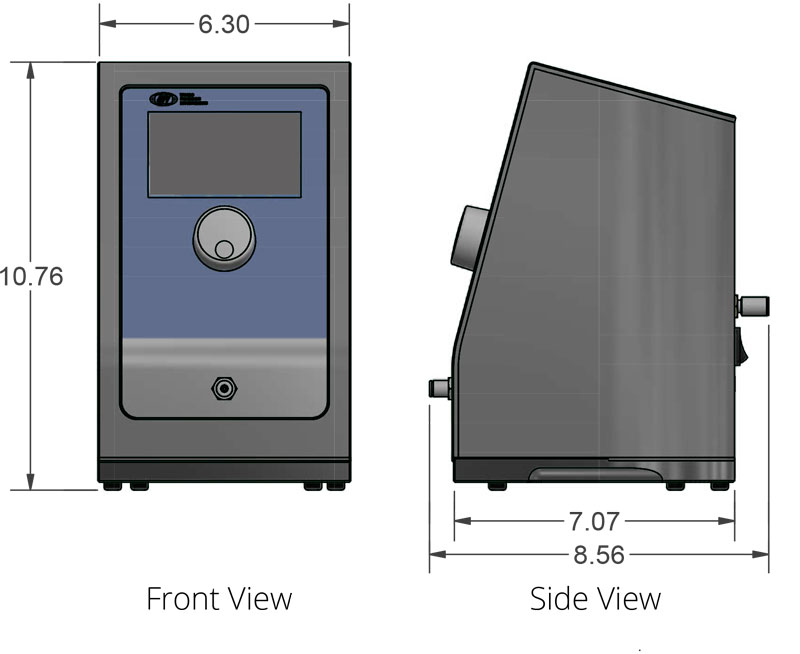
Accessories
Citations

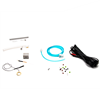



Request
Catalogue
Chat
Print